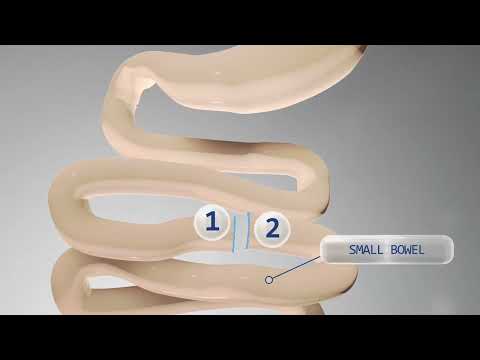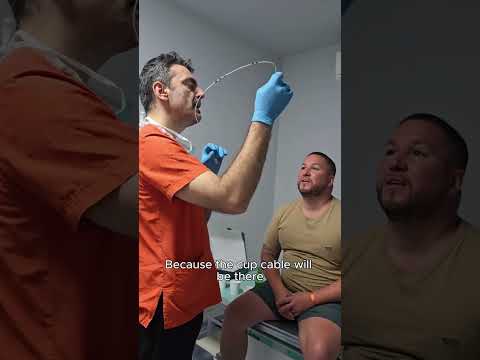Gastric Sleeve in Turkey | Bridge Health Travel
Calculate Your Cost / Price
Gastric Balloon in Antalya / Turkey by Obesity Center Antalya
-
What is a Gastric Balloon?
A gastric balloon is a non-surgical weight loss device that is temporarily placed in the stomach to help obese individuals lose weight. It works by occupying space in the stomach, thus promoting a feeling of fullness and helping reduce food intake. This method is intended for those who have struggled to lose weight through diet and exercise alone and are looking for a less invasive option compared to bariatric surgery.
-
1.1 Technical Details
The gastric balloon is typically made of soft silicone and is inserted into the stomach via the mouth using an endoscope. Once in place, it is filled with a sterile saline solution or gas, expanding to occupy space in the stomach. The procedure usually takes about 20-30 minutes and is performed under mild sedation.
-
1.2 Is the Gastric Balloon a New Method?
The gastric balloon is not a brand-new method; it has been used for several decades. However, technological advancements and better understanding of the procedure have significantly improved its safety and efficacy over the years. Today, it is a well-established and widely accepted weight loss option.
-
1.3 What is the Difference Between a Swallowable Gastric Balloon and a Regular Gastric Balloon?
A regular gastric balloon requires an endoscopic procedure for insertion and removal, whereas a swallowable gastric balloon can be ingested in the form of a capsule. Once the capsule reaches the stomach, it is filled with a gas or liquid via a thin tube, which is then removed. The swallowable version is less invasive and does not require sedation or an endoscopic procedure, making it a more convenient option for many patients.
-
1.4 How is a Gastric Balloon Inserted?
The insertion of a gastric balloon involves an endoscopic procedure. The patient is given a mild sedative, and the deflated balloon is passed through the mouth into the stomach using an endoscope. Once positioned correctly, the balloon is filled with saline or gas to expand it. The procedure is generally quick, taking about 20-30 minutes, and the patient can usually go home the same day.
-
1.5 How is a Gastric Balloon Removed?
The removal of a gastric balloon also involves an endoscopic procedure. After a few months (typically six months), the balloon is deflated and removed through the mouth using an endoscope. The patient is sedated during this process to ensure comfort and safety. The removal procedure is relatively straightforward and usually completed within 20-30 minutes.
-
1.6 Gastric Balloon Prices in 2024
The cost of a gastric balloon procedure can vary significantly based on geographic location, the type of balloon used, and the healthcare provider. As of 2024, the prices can range from $3,000 to $8,000. This price typically includes the balloon, the insertion and removal procedures, and follow-up appointments.
-
2 For Whom, Why, and When is a Gastric Balloon Applied?
The gastric balloon is typically recommended for individuals who are moderately to severely obese and have not been able to achieve significant weight loss through diet and exercise alone. It is also an option for those who do not qualify for or prefer to avoid more invasive bariatric surgeries.
-
2.1 Who is Suitable for a Gastric Balloon?
The gastric balloon is suitable for adults with a body mass index (BMI) of 30-40 who have not succeeded with other weight loss methods. It is also considered for individuals with a BMI over 27 who have obesity-related health conditions such as diabetes, hypertension, or sleep apnea.
-
2.2 Who is Not Suitable for a Gastric Balloon?
The gastric balloon is not suitable for individuals with certain medical conditions, including those with a history of gastrointestinal surgery, severe liver disease, or inflammatory bowel disease. It is also not recommended for pregnant women or those planning to become pregnant soon.
-
3 Risks and Complications of the Gastric Balloon
While the gastric balloon is generally safe, there are potential risks and complications associated with its use. These can include nausea, vomiting, abdominal pain, and acid reflux, especially in the first few days after insertion. More serious complications, although rare, can include balloon deflation and migration, leading to intestinal obstruction.
-
3.1 What Happens if the Gastric Balloon Bursts?
If a gastric balloon deflates or bursts, it can potentially migrate into the intestines, causing an obstruction. In such cases, immediate medical attention is required to remove the deflated balloon. Most modern gastric balloons are designed with a safety feature that changes the color of the patient’s urine if the balloon deflates, providing an early warning sign.
-
4 What are the Outcomes of Gastric Balloon Application?
The primary outcome of gastric balloon application is significant weight loss. Patients can expect to lose between 10-15% of their total body weight over the six months the balloon is in place. This weight loss can lead to improvements in obesity-related conditions such as type 2 diabetes, hypertension, and sleep apnea. Additionally, patients often experience an enhanced quality of life and increased mobility.
-
5 After the Gastric Balloon
Post-procedure care is crucial for the success of the gastric balloon treatment. This includes dietary modifications, regular physical activity, and psychological support to ensure long-term weight management.
-
5.1 Nutrition After the Gastric Balloon
After the gastric balloon insertion, patients must follow a liquid diet for the first few days, gradually progressing to soft foods and then regular foods. A nutritionist often guides patients in adopting a balanced, low-calorie diet to maximize weight loss and maintain results after the balloon is removed.
-
5.2 Physical Activity Orientation
Regular physical activity is essential after gastric balloon placement. Patients are encouraged to engage in moderate exercise, such as walking, swimming, or cycling, to enhance weight loss and overall health. An exercise plan tailored to the patient's abilities and goals can help maintain motivation and consistency.
-
5.3 Psychological Support
Psychological support plays a vital role in the success of the gastric balloon procedure. Counseling or support groups can help patients address emotional eating habits, stay motivated, and cope with the lifestyle changes required for sustained weight loss.
6 Frequently Asked Questions About the Gastric Balloon Procedure
-
6.1 How Does the Gastric Balloon Help with Weight Loss?
The gastric balloon helps with weight loss by taking up space in the stomach, which reduces the amount of food the stomach can hold and promotes a feeling of fullness. This helps patients eat smaller portions and reduce their overall calorie intake.
-
6.2 What is the Purpose of the Gastric Balloon?
The purpose of the gastric balloon is to provide a non-surgical, temporary weight loss solution for obese individuals. It helps jumpstart weight loss, providing patients with the motivation and physical changes needed to adopt healthier lifestyle habits.
-
6.3 Are People Satisfied with the Gastric Balloon?
Many patients report high satisfaction with the gastric balloon due to the significant weight loss achieved and improvements in obesity-related health conditions. However, success depends on the patient's commitment to lifestyle changes and follow-up care.
-
6.4 What are the Advantages of the Gastric Balloon?
Advantages of the gastric balloon include its non-surgical nature, relatively quick and easy insertion and removal procedures, and significant weight loss potential. It also provides an option for patients who are not candidates for or do not wish to undergo bariatric surgery.
-
6.5 What are the Risks / Disadvantages of the Gastric Balloon?
The risks and disadvantages of the gastric balloon include potential side effects such as nausea, vomiting, and abdominal discomfort, especially in the initial days. There is also a risk of balloon deflation and migration. Additionally, the weight loss achieved can vary, and maintaining the results requires a strong commitment to lifestyle changes.
6.6 How Much Weight Can I Lose with the Balloon?
Patients can expect to lose between 10-15% of their total body weight over the six months the balloon is in place. The exact amount of weight loss depends on factors such as adherence to dietary recommendations and engagement in physical activity.
- 6.6.1 Sources
International Journal of Obesity
Journal of Bariatric Surgery
American Society for Metabolic and Bariatric Surgery (ASMBS)
National Institute of Diabetes and Digestive and Kidney Diseases (NIDDK)
This comprehensive guide covers all aspects of the gastric balloon, providing valuable information for those considering this weight loss option.
In cases where diet and exercise do not yield results in obese patients or when rapid weight loss is necessary for health reasons, surgical and non-surgical treatment options are utilized. Gastric balloon is one of the non-surgical methods for gastric reduction. Gastric balloon is widely preferred by patients and experts in recent years due to its ability to assist in rapid weight loss and its non-surgical application.
Gastric Balloon Prices in Antalya / Turkey
How do I go for gastric balloon treatment in Turkey?
Which hospital is best for gastric balloon in Turkey?
-
How to prepare for gastric balloon?
Before insertion of the gastric balloon, you must fast from food and drinks for 12 hours. When the gastric balloon is to be removed, you must start on a fluid-only diet 48 hours beforehand. This means no solid food at all.
-
How do you qualify for gastric balloon?
Patients may be eligible for a gastric balloon if they have a BMI between 30 and 40, and they haven't been able to lose weight and keep it off with other weight-loss plans.
-
What to expect when you get a gastric balloon?
Pain and nausea affect about one-third of people soon after insertion of an intragastric balloon. However, these symptoms usually only last for a few days after balloon placement. Although rare, serious side effects may occur after intragastric balloon placement.
-
What do I eat in a day with a gastric balloon?
Continue to eat 3 regular meals each day and try not to leave more than 3-4 hours between meals.
EAT FIRST -Protein (meat, fish, poultry, eggs, beans, pulses)
EAT SECOND- Vegetables and salad.
EAT LAST - Carbohydrates (bread, rice, potato, pasta, grains)
-
How to sleep with a gastric balloon?
Once you have passed the initial few weeks following the gastric balloon procedure, you should be able to sleep normally. This means you can sleep on your back or on your side. Sleeping in these positions allows your body's natural digestive processes to function while you rest.
-
Can you eat bread with a gastric balloon?
Avoid anything doughy such as bread or chapattis as these can stick to the balloon. You can gradually start to include the 'caution foods'. Continue to drink between meals only and avoid sugary or fizzy drinks as before. Still aim for about 2 litres (3½ pints) each day.
-
How quickly do you lose weight with gastric balloon?
Losing Weight with a Gastric Balloon
You are likely to lose weight quickly, especially in the first three to four months of living with the gastric balloon. Typically, people lose about 10 to 15% of their body weight by the time the six-month program is complete.
-
Can you drink coffee with a gastric balloon?
This includes any fluid such as water, juices, milk, squash and soups. Tea and coffee are also allowed though should not be your main source of fluids. You should avoid drinks with too much gas. Fizzy drinks can cause a great deal of discomfort with a gastric balloon.
-
Can I fly with a gastric balloon?
Yes. Flying with a gastric balloon is perfectly fine. It will not burst or rupture on a commercial flight. Once you've recovered from the initial symptoms of having a placement you will be able to fly and enjoy your holiday as normal.
-
How long do you feel sick after gastric balloon?
Nausea and vomiting are very common in the first seven to ten days after gastric balloon insertion and this is simply because your stomach isn't used to having it there.
-
Is gastric balloon a good idea?
The gastric balloon procedure may be particularly useful for people considered too overweight to undergo vital surgery. The use of the balloon to successfully reduce weight prior to surgery can also help to reduce the risks associated with surgical procedures on overweight patients.
-
What happens if the gastric balloon pops?
Bowel obstruction and perforation are the most significant concerns if your balloon bursts. Symptoms such as severe abdominal pain, vomiting, or difficulty swallowing should never be ignored, as they may indicate a burst balloon.
-
Do you feel hungry after gastric balloon?
Approximately 90% of people have no appetite at all after the insertion of an intragastric balloon. In the first 10 days you will be restricted to a liquid diet, but most people do not feel hungry!
-
Who cannot have a gastric balloon?
Who is not a candidate for gastric balloon? Gastric balloon is not qualified to pregnant women, long-term cortisone users, those who are undergoing cancer treatment or those who have recently had cancer treatment.
-
How painful is a gastric balloon?
About one-third of patients have pain, nausea or discomfort in the first few days. Over-the-counter pain medication usually helps. Weight loss: You may not feel hungry the first couple of weeks, leading to rapid weight loss.
-
Can your body reject a gastric balloon?
It is important to remember that a BIB gastric balloon is a foreign object, meaning your body will attempt to reject it.
-
What is the age limit for gastric balloon?
To be eligible for gastric balloon, you must: Be at least 13 years old. Have a body mass index (BMI) ≥30 and ≤40 kg/m2. Have tried other weight-loss programs, such as a supervised diet or exercise regimen.
FQ About Gastric Balloon Clinic in Antalya / Turkey
Gastric band surgery involves placing an adjustable band around the upper portion of the stomach, limiting food intake and promoting weight loss. This procedure is reversible and less invasive than other bariatric surgeries. Its available privately and occasionally through the NHS for eligible patients.
You'll likely not be able to have surgery if you have these conditions: Blood-clotting disorders. Severe heart disease that prohibits the safe use of anesthesia. Other conditions that increase the risk of using anesthesia. Bariatric Surgery Turkey Price For more details in our article, Who shouldn't get bariatric surgery in Turkey where you will find all the information about Who shouldn't get bariatric surgery in Turkey please contact us. Who shouldn't get bariatric surgery in Turkey You'll likely not be able to... +More
Revisional bariatric surgery, which is performed when a previous weight-loss surgery has not achieved the desired results or has led to complications, is a specialized procedure offered by many Turkish clinics. Patients who have traveled to Turkey for revisional bariatric surgery often express relief and satisfaction with the outcome. Reviews indicate that Turkeys experienced surgeons are highly skilled in handling complex cases, ensuring patients receive the best possible care. Patients frequently mention the... +More
Gastritis erythema refers to redness or inflammation of the stomach lining, often seen during endoscopic examinations. It can indicate mild gastritis or early stages of stomach irritation. The cause may be related to infections, medication use, or diet, and treatment typically involves addressing the underlying issue.
The cost of a gastric band varies by country and healthcare system. In the UK, it can cost between £5,000 to £8,000 privately, while in the U.S., it ranges from $9,000 to $15,000. Some insurance plans may cover the procedure if it's deemed medically necessary for obesity treatment.
As with any surgery, gastric bypass carries some risks. Complications of surgery include infection, blood clots, and internal bleeding. Another risk is an anastomosis. This is a new connection created in your intestines and stomach during the bypass surgery that will not fully heal and will leak. Bariatric Surgery Turkey Price For more details in our article, What is the bad side of bariatric surgery in Istanbul where you will find all the information about What is the bad side of bariatric surgery in Istanbul... +More
Obesity surgery in Turkey encompasses various procedures designed to help patients lose weight and manage obesity-related health conditions. These include gastric sleeve, bypass, and non-surgical options like the intragastric balloon. Turkey is one of the most popular destinations for these surgeries, attracting patients from all over the world.
Gastric Sleeve in Turkey can be performed if the patients: BMI is 40 or higher (extreme-severe obesity). BMI is 35 to 39.9 and has a serious weight-related health problem that can improve with weight loss.
Medical equipment and standards simply aren't as highly regulated in Turkey as they are in the UK and EU countries. As Turkey isn't part of the EU, they do not comply with the strict guidelines that we see in countries like France and Germany. Bariatric Surgery Turkey Price For more details in our article, Why is gastric surgery so cheap in Turkey where you will find all the information about Why is gastric surgery so cheap in Turkey please contact us. Why is gastric surgery so cheap in Turkey Medical equipment... +More
You must have a BMI of at least 27-30 to be considered for surgery. It's important to note that your BMI doesn't differentiate between your body fat and mass. This means bodybuilders and people who have lots of muscle will have a high BMI but aren't overweight or obese. Bariatric Surgery Turkey Price For more details in our article, Can I get gastric sleeve if I'm not obese in izmir where you will find all the information about Can I get gastric sleeve if I'm not obese in izmir please contact us. Can I get... +More
Who is a good candidate for gastric sleeve? Gastric sleeve surgery is good for overweight people with a body mass index (BMI) of 40 kg/m². Bariatric Surgery Turkey Price For more details in our article, What BMI do you need for gastric sleeve in Turkey where you will find all the information about What BMI do you need for gastric sleeve in Turkey please contact us. What BMI do you need for gastric sleeve in Turkey Who is a good candidate for gastric sleeve? Gastric sleeve surgery is good for overweight people... +More




























